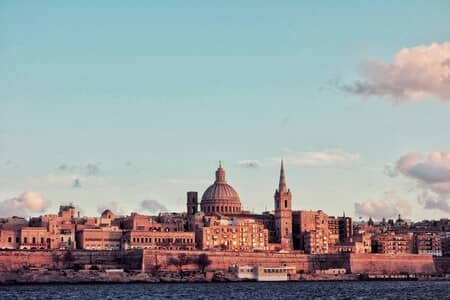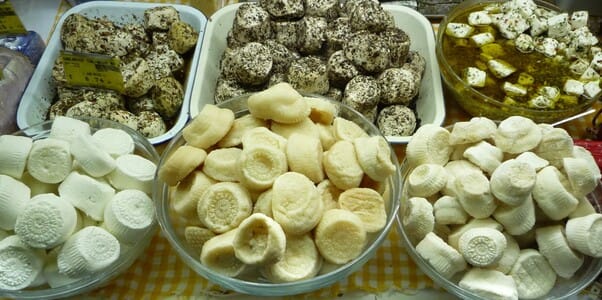An Island of Contradictions and Continuity
Malta is often described as small – and it is. But calling it “tiny” doesn’t do justice to the depth it holds. Floating between Sicily and North Africa, this rocky Mediterranean archipelago has been invaded, traded, fortified, and worshipped for thousands of years, yet it steadfastly refuses to be just a footnote. Malta is less a destination and more a layered manuscript: prehistoric temples carved before the pyramids, Crusader walls shadowed by British balconies, and fishing villages where Sunday still tastes like sea salt and olive oil.
Where Stones Remember
Before Rome was born, Malta was already ancient. The Ġgantija Temples on Gozo – older than Stonehenge – rise from the earth like myths made solid. They are among the oldest freestanding structures in the world, and yet many travelers miss them entirely. Local legend insists they were built by giants, and standing in their presence, it is easy to understand why.
Every age has left its own calligraphy in Malta’s limestone: the Phoenicians brought trade, the Romans brought their baths and mosaics, and the Knights of St. John raised a labyrinth of bastions so formidable that even Napoleon needed cleverness, not cannonballs, to claim the island. Valletta, Malta’s capital, is a UNESCO-listed grid of baroque bravado, golden in daylight, and glowing amber at dusk.
Culture in the Cracks

Modern Malta is more than its museums and cathedrals; culture here is lived, not displayed. The Maltese language itself is a mosaic of Semitic roots with Italian, French, and English embroidery. It’s the only Semitic language written in Latin script, and one of the few where a word can be both poetic and profane, depending on your tone.
Local village fiestas are a uniquely Maltese paradox – deeply religious yet wildly celebratory, complete with marching bands, fireworks, and illuminated saints paraded through narrow alleys as the scent of fried rabbit and sugared almonds fills the air.
In the arts, a quiet renaissance is taking place. Contemporary Maltese painters, writers, and musicians are digging into their hybrid identities, producing work that explores what it means to be European, Mediterranean, and entirely something else.
Coastlines That Refuse to Be Tamed
Despite its dense history, Malta has not been entirely paved over. The islands’ geography is rugged, with coastlines that don’t politely curve but instead jut out in cliffs, coves, and natural rock windows. One of the most iconic – the Azure Window – collapsed in 2017, not into memory but into myth. It remains a symbol of Malta’s beauty and fragility.
The Blue Grotto on the south coast offers a more intimate marvel: sea caves lit from below by surreal blue light refracted from the seabed. On Gozo, the red sands of Ramla Bay offer a rare Mediterranean beach where the landscape still feels untouched. And between the islands lies Comino, a car-free speck whose Blue Lagoon draws day-trippers, but also hides wild trails and snorkeling coves once the boats drift back home.
Food with a Memory

Ġbejna becomes Malta’s first product granted Protected Designation of Origin status by the EU.
Maltese cuisine is rustic, rich, and proudly homegrown. At its heart is ġbejna, a sheep’s cheese that comes soft, dried, or peppered, often found stacked on kitchen shelves in villages. Then there’s fenek – rabbit stewed in wine and garlic, a dish that speaks to both survival and celebration. Local lore says the knights forbade the peasants from hunting them, which only made the dish more defiantly Maltese.
Seafood is less a luxury than a rhythm here – octopus slow-cooked in tomato and capers, lampuki (dolphin fish) served pan-fried when in season, and fresh hobż biż-żejt (bread with tomato paste, olives, and tuna) wrapped in paper for beach picnics.
The island’s obsession with sweets is no less intense – date-filled pastries called imqaret, almond-stuffed figolli, and kannoli that rivals anything across the sea in Sicily.
Climate Crisis on a Stone Island
Malta’s beauty comes with vulnerability. As one of the EU’s smallest nations, it is on the frontlines of climate change. Rising temperatures threaten marine ecosystems, while over development gnaws at the island’s rural soul. Agricultural land is shrinking, and traditional farming, already a challenge on rocky soil, is struggling under droughts and erratic seasons.
But there is pushback. Local NGOs are rewilding coastal paths. Fishermen are turning toward sustainable practices. Young Maltese activists are using art and media to fight apathy, reminding both locals and tourists that the future of Malta’s beauty depends on how they treat it now.
A Final Thought: Malta, Unfinished
o know Malta is to understand that it doesn’t fit easily into categories. It’s not just a sunny European getaway or a relic of empire. It is a place still in the process of defining itself, somewhere between continent and island, between tradition and reinvention. And like the ancient stones buried beneath its soil, the real Malta reveals itself slowly, to those who take the time to look beyond the surface.
Maire Brown